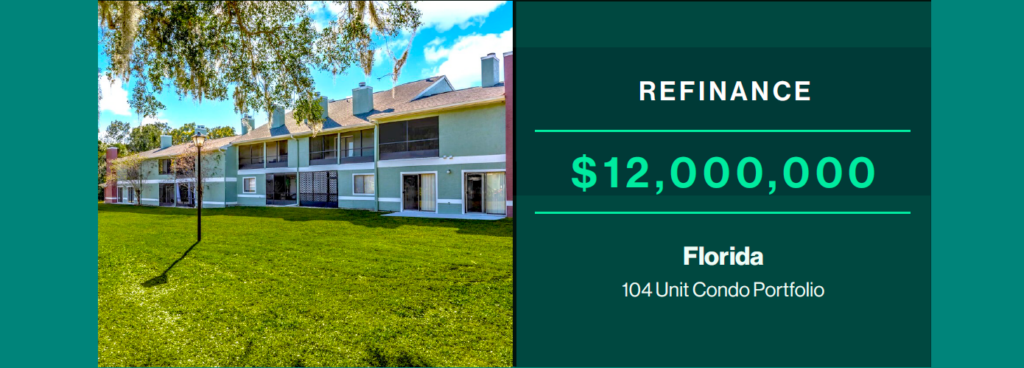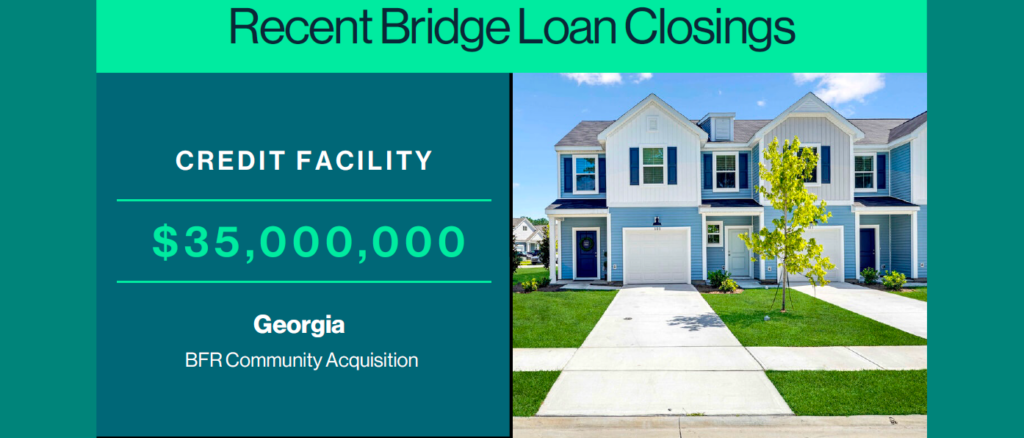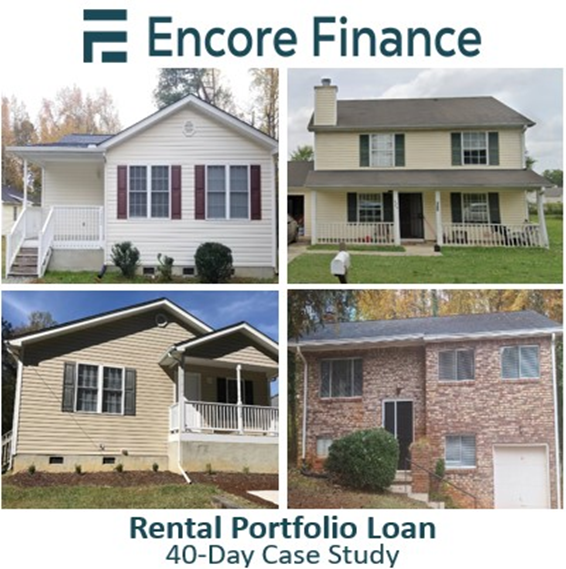The Build-to-Rent (BTR) sector continues to evolve rapidly, shaped by shifting economic conditions, increasing competition, and innovative development strategies. At the recent Build-to-Rent East conference, industry leaders shared insights into key trends affecting the market. Here are some of the major takeaways:
1. Rising Land Competition and Cost Pressures
One of the most pressing challenges facing the BTR sector is the intensifying competition for land. Multifamily developers and traditional homebuilders are increasingly moving into the space, driving up land costs and making site selection more complex. This competition underscores the importance of strategic location selection and creative deal structuring to secure viable land opportunities.
2. Evolving Development Strategies and Market Segmentation
Developers are embracing niche strategies to stand out in the BTR market. This includes tailoring floor plans to specific demographics, incorporating high-end amenities, and targeting high-demand locations. These efforts highlight the increasing segmentation within the BTR space, where differentiation is becoming crucial to attracting tenants and investors alike.
3. Adapting to Interest Rate Uncertainty with Flexible Financing
Uncertainty in the interest rate environment is pushing BTR borrowers to seek more flexible loan structures. Floating-rate debt and prepayment options with fewer restrictions are becoming more common as developers aim to navigate potential market shifts with greater financial agility.
4. Supply Pressures and Rent Growth Outlook
A surge in new BTR deliveries has temporarily put pressure on rents in primary markets. However, industry sentiment suggests this is a short-term challenge, as new build-for-rent (BFR) starts are declining. Once these new units are absorbed, rent growth is expected to resume, reinforcing confidence in the sector’s long-term stability.
5. Investors Moving Up the Value Chain
To enhance yields and mitigate market fluctuations, investors are increasingly partnering with homebuilders or even establishing their own captive homebuilding operations. While this strategy introduces construction risk, it also improves yield on cost, a critical factor in today’s evolving market where equilibrium cap rates are still being established.
6. Debt Market Dynamics: Spread Compression and Refinancing Opportunities
Significant spread compression in term and bridge debt has enabled cash-neutral refinancings, reducing the negative leverage impact on new acquisitions. This financial shift is providing developers and investors with more stability in structuring their deals.
7. Positive Sentiment Toward National Homebuilders
Despite challenges in land availability and broader macroeconomic uncertainties, sentiment toward national homebuilders remains strong. Their ability to deliver quality construction at scale continues to be a major asset for the BTR sector.
8. BFR Interest Outpacing Multifamily Development
Investor interest in build-for-rent (BFR) and for-sale housing is currently outpacing enthusiasm for ground-up multifamily development. One key driver of this trend is that lender spreads remain relatively close between these product types, making BFR an increasingly attractive option for developers and financiers.
Looking Ahead
The insights from Build-to-Rent East reinforce that while the sector is facing challenges, opportunities for innovation and growth remain strong. Developers, investors, and lenders are actively adapting to market shifts by refining their strategies, embracing flexibility in financing, and positioning themselves to capitalize on future demand. As the market continues to mature, those who can navigate these dynamics effectively will be best positioned for long-term success in the BTR space.
The 2025 National Private Lenders Association (NPLA) conference in Miami brought together key players across the private lending ecosystem to share insights, discuss market shifts, and forecast future trends. Here are the top takeaways from this year’s event:
1. Capital Is Still Flowing, But Borrowers Must Be Strategic
Private lender sentiment and deal volume remain strong, but the landscape has become more nuanced. A major theme at NPLA 2025 was the growing importance of borrowers understanding the capital source of their lenders. The era of “catch-all” lending is fading, especially with the noticeable pullback in DSCR multifamily lending.
For borrowers, this means a more strategic and informed approach is needed. Capital is out there, but accessing it requires clarity on your needs and alignment with the right lending partners.
2. Distribution Depth Is a Key Differentiator
Among private lenders, those with the deepest and most diversified distribution channels are performing the strongest. These lenders are better positioned to offer customized, flexible financing solutions, thanks to broader access to investors and capital markets on the back end. This depth enables them to weather market fluctuations more effectively and serve a wider range of borrower profiles.
3. Optimism Around Treasuries and Deregulation
Looking ahead, there is a strong sense of optimism among lenders and investors alike. Many are anticipating a decline in treasury yields over the next 12 months. Combined with expectations of further deregulation, this could significantly boost transaction volume and bring more liquidity into the market.
Final Thoughts
The private lending space is maturing, and NPLA 2025 made it clear that borrowers and lenders alike must adapt. Understanding capital sources, aligning with specialized lenders, and keeping an eye on macroeconomic signals will be critical to thriving in this evolving environment. For those willing to do their homework and build the right relationships, the opportunities are as strong as ever.
Success as a real estate investor requires you to move quickly. But one area where you can’t afford to rush is in choosing a lending partner. Unfortunately, many investors lock themselves into unfavorable terms simply because they don’t know how to spot loan clauses that could cause them problems down the road.
At Encore Finance, we believe that transparency and alignment with our clients’ goals are non-negotiable. This blog provides some tips on how to identify red flags before signing a loan, so you can protect your investments and stay on track to achieve your goals.
Inflexible Terms
Loan terms may appear good at the moment you sign, but what if the market shifts? Inflexible loan terms can limit your ability to pivot when market conditions change or new opportunities arise.
Watch out for:
- Rigid Amortization Schedules: Lack of options for interest-only payments or term extensions can easily create a cash flow crunch.
- Strict Collateral Requirements: Demands for overly restrictive guarantees that tie up your other assets can handcuff you and keep you from taking advantage of new opportunities.
- One-Size-Fits-All Structures: A loan that doesn’t consider your unique project timelines or goals can end up costing you big.
How to ensure adequate flexibility
Look for lenders who tailor their loan terms to your specific needs. At Encore Finance, we offer solutions like phased funding for Build-for-Rent projects, allowing investors to scale their financing as they go.
Vague Exit Clauses
An unclear or poorly defined exit clause can lock you into a loan for longer than you intended. This is especially critical for bridge loans, where the ability to refinance or sell is key to your strategy.
Here are a few warning signs:
- Ambiguous Exit Terms: Loopholes or vague language about penalties or timelines can set you up for a bad surprise.
- Limited Refinance Options: Restrictions on transitioning to long-term financing can cost you money down the road.
- Excessive Prepayment Penalties: High costs for paying off the loan early can easily derail your profitability.
How to ensure a profitable exit
Ensure the exit strategy is straightforward and aligns with your investment plan. A good lender will discuss exit scenarios upfront and work with you to create a seamless transition to permanent financing or sale.
Poor Communication
A lender’s communication style can be a strong indicator of their reliability. Poor communication often leads to misunderstandings, delays, and added stress.
Be wary of:
- Unresponsive Loan Officers: Getting timely answers to your questions should be non-negotiable.
- Overly Complicated Language: Terms and conditions that are hard to interpret can lead to costly misunderstandings.
Shifting Answers: Inconsistent explanations about rates, terms, or conditions is a major liability. You need to be able to trust what your lender tells you without a second thought.
How to avoid communication issues
Choose a lender who prioritizes transparency and collaboration. At Encore Finance, we pride ourselves on being relationship-driven, ensuring you’re informed and confident every step of the way.
Unrealistic Promises
If a lender’s offer seems too perfect, it probably is. Common tactics include promising ultra-low rates that don’t reflect your actual risk profile or offering terms that magically solve all your problems without compromise.
Specifically, look out for these:
- Bait-and-Switch Tactics: Attractive terms initially that change after you’ve committed.
- Lack of Transparency: Avoidance of detailed discussions about risks or downsides.
- Minimal Due Diligence: Failure to fully assess your project, which can result in funding delays or denials later.
How to stay grounded in reality
Work with lenders who balance optimism with realism. A credible partner will give you honest feedback and realistic terms from the outset. At Encore Finance, we’re invested in your long-term success, so transparency and honestly are at the heart of everything we do.
The Encore Difference
At Encore Finance, we’re more than just a lender; we’re a trusted partner in your real estate investment journey. Our team’s extensive experience, coupled with a commitment to transparency and client success, ensures that you’ll never face hidden fees, rigid terms, or vague clauses. We’re here to help you navigate challenges and seize opportunities with confidence.
Real estate investment is too important to leave to chance. By staying vigilant and asking the right questions, you can avoid common pitfalls and find the financing partner who’s truly invested in your success.
Ready to work with a lender who puts your goals first? Contact Encore Finance today to learn more about our investor-focused loan solutions.
Build For Rent (BFR), the construction of new single-family homes specifically for rental purposes, caters to the increasing demand for privacy, spacious living, larger outdoor areas, and adaptable home offices. This fast-growing real estate asset class is reshaping development strategies, prompting both multifamily developers and traditional homebuilders to pivot towards the single-family rental (SFR) market with an eye on increased tenant demand and longer tenant retention.
The BFR movement has given rise to various strategic approaches. One noteworthy strategy involves selling newly built rental homes to institutional investors immediately after receiving a certificate of occupancy. These investors, drawn to the SFR market, prefer acquiring portfolios of new single-family homes in bulk, which they often achieve through collaborative partnerships with home builders. This arrangement benefits builders by reducing risk through pre-sales, while investors gain high-quality SFR properties without the hassle of individual acquisitions.
If you are considering a similar exit strategy or seeking financing for your BFR project, here are some key financing tips to keep in mind.
Beyond interest rates, loan amounts, and recourse options, two additional factors are critical when evaluating construction financing: 1) Lock-out / Prepayment penalties and 2) Servicing.
Lock-out/Prepayment Penalties
Borrowers and lenders often have differing incentives: while borrowers aim to complete projects and repay loans swiftly, lenders benefit from keeping the loan outstanding in order to earn more interest.
This misalignment can lead lenders to impose lockout periods (during which loans cannot be repaid) or prepayment penalties, essentially penalizing borrowers for early project completion. If your plan involves selling or refinancing homes upon obtaining certificates of occupancy, ensure your lender permits penalty-free loan repayment.
Construction Servicing Team
Consider who will handle your draw requests, release of homes, and other loan-related issues. An external servicing team (aka “middleperson”) can introduce delays and inefficiencies, often leading to frustrations such as rigid adherence to loan agreements without flexibility.
For instance, if you need to shift funds from one line item to another, you might encounter the common response, “That’s not what the loan agreement specifies,” initiating a lengthy and cumbersome process with your lender through a third party. Conversely, lenders with internal servicing teams typically offer enhanced communication, greater flexibility, and a stronger overall relationship.
Lending is a relationship business, so lenders are often more inclined to help clients overcome issues during the loan term, which can keep your project on track and ensure timely completion.
With the influx of new institutional and retail investors into the Build For Rent sector, we can anticipate further innovative strategies enhancing the BFR model.
I hope you found this article helpful. Whether you are developing BFR communities, renovating multifamily properties, or expanding your SFR portfolio, I want to hear from you!
Please reach out to Brandon Turk ([email protected]) to discuss potential loan opportunities.
BFR Highlights: Daphne, AL

This bridge loan enables for the acquisition of a 141-unit build for rent community in Alabama. The loan enables the sponsor group to acquire the newly completed homes in phases as units receive their certificates of occupancy.

BFR Highlights: Pooler, GA

This bridge loan enables for the acquisition of a 143-unit build for rent community in Georgia. The loan enables the sponsor group to acquire the newly completed homes in phases as units receive their certificates of occupancy.








Encore Finance’s CEO, Elizabeth (Beth) O’Brien was recently interviewed by How I Met My Data, where they unravel the stories behind data-driven leadership journeys that are shaping the future of business.
Beth’s journey into the world of data began with a love affair sparked in high school math classes. She reflects on the clarity and precision that math offered amidst the tumultuous landscape of adolescence. This early exposure to problem-solving ignited a passion for data analysis that would become the cornerstone of her career.
As Beth transitioned into the corporate world, she quickly recognized the pivotal role of data in driving business outcomes. Managing various divisions within companies, she witnessed firsthand the symbiotic relationship between measurement and management. However, it was the advent of data visualization tools that truly revolutionized her approach, unlocking new dimensions of understanding and decision-making.
Beth’s insights extend beyond internal datasets to the vast realm of external data sources. She shares her experiences navigating the labyrinth of publicly available mortgage data, stressing the importance of consumability and relevance over sheer volume. By harnessing external data effectively, Beth exemplifies how CEOs can extract invaluable insights to steer their organizations towards success.
For CEOs looking to foster a data-driven culture within their organizations, Beth underscores the significance of measurability and transparency. By showcasing the tangible benefits of data-driven decision-making and encouraging a culture of openness to insights, leaders can catalyze a transformative shift in organizational dynamics.
To CEOs hesitant about embracing data, Beth offers a poignant yet straightforward piece of advice: visualize the numbers. By rendering data in accessible formats such as charts and graphs, leaders can unlock profound insights and foster a newfound appreciation for its transformative potential.
Beth O’Brien’s journey epitomizes the transformative power of data in modern leadership. Through her rich anecdotes and pragmatic wisdom, she underscores the indispensable role of data in driving informed decision-making and nurturing a culture of continuous improvement.
Watch the interview here: https://beekin.co/resources/insights/interview-with-beth-obrien/
An interview with Mike DeRienzo, contributing writer for Originate Report
For those familiar with Elizabeth (Beth) O’Brien’s career, the name “Encore” will make perfect sense.
After all, she has spent the last decade-plus innovating in the field of private real estate lending. So for Beth, Encore Finance is just that — a professional and personal encore.
“This is actually my third startup. After years of being an attorney and banker with a focus on commercial and residential real estate, I began to notice certain gaps between the markets.”
Those years included director roles at Citi, Goldman Sachs, and Auction.com. She took the lessons from those positions into her first startup, AuctionFinance.com, an online platform that assisted buyers in obtaining financing on assets purchased through Auction.com. Next, she founded CoreVest Finance, a leading nationwide private lender specializing in rental portfolio loans, credit lines, bridge loans, and build-to-rent loans for residential real estate investors.
“My business was a classic tale of seeing a need in the industry just adjacent to other things that were being done well and being able to expand a market. It’s no secret that residential mortgages are a huge business. The commercial mortgage business, while smaller, is also quite strong. But both businesses lack the same thing. They both fail to address the needs of the people who invest in residential real estate in a professional commercial sense. In fact, the regulatory framework fails to address this category well.”
While vision can provide you a path, more is required to turn a great idea into something that works. You need to develop connections and relationships with people that can help you make your company a reality through startup capital and other investments.
You also need a good strategy to make that vision happen. And O’Brien’s strategy is all about that next performance.
But from the beginning, Beth knew she needed more than a vision. The success of her ventures are a direct result of her ability to develop connections, build key relationships, and lay out a sound strategy for long term growth. To Beth, it’s always about what’s coming next.
“We like to think of Encore as an understanding that we are always playing for the next loan. We are not just transacting but building an ongoing relationship. This is why our tagline is ‘Encore — For your next loan’.” And for Beth, a big part of staying ahead is simply being prepared for what might happen next.
“As Louis Pasteur said, I am fond of quoting, ‘Chance favors the prepared mind.’ I’m not so sure I chose my career path; I always was open to and responded to the opportunities that I saw by being prepared. With good preparation, the right strategy, and the right capital, a business can thrive.”
A willingness to change direction when circumstances dictate is one attribute that has helped Beth navigate the never-ending twists and turns that come with operating a startup in a fast-moving industry.
“You need to be able to respond, react, adapt, and forge forward. Since this is my third startup, I’ve had the chance to learn a lot of lessons along the way. Though they’ve been different, they’ve all presented me with challenges that have required me to make quick decisions. The key is to keep making decisions and react quickly enough to course correct when you do hit a challenge. The most difficult part is telling when a speed bump is a mistake and needs to be fixed.”
And no matter how experienced and knowledgeable you are, mistakes will always happen.
“You always think you will not make the same mistakes, and by and large you don’t, but you make different mistakes because the market is different, and the circumstances are different. The greatest skill of an entrepreneur, in my opinion, is the ability to course correct in a timely fashion.”
One thing that Beth has found pleasantly surprising is the level of camaraderie and support in the residential real estate mortgage industry, even among competitors.
“That has been the biggest surprise so far on this journey. The amazing relationships developed in this industry as we grow together from clients to vendors, bond holders, and competitors. The support for everyone else in the industry is incredibly reaffirming.”
Relationships make up the foundation of Encore Finance — relationships built through dependable financing solutions that are tailored to an individual investor’s needs. This commitment to personalized solutions is one big reason that many of Encore’s clients have been in relationship with O’Brien for several years or more.
Outside of being a serial startup founder in a very demanding industry, what else makes Beth tick?
“I am a big cook and grow an amazing vegetable garden that forms the basis of my experimentation. I would like to write a cookbook since one of the most enjoyable things I ever did at work was help compile a cookbook of what everyone was doing during the quarantine.”
It’s fitting that someone with such a passion for creating businesses from scratch would also be an avid cook. From the boardroom to the kitchen, we’re definitely excited to see what Beth whips up next.
Check out full article here: https://geracilawfirm.com/the-originate-report/encore-performance-encore-finance-marks-third-start-up-journey-for-ceo-beth-obrien/
Encore recently helped a borrower with 23 SFR rentals in the Durham and Atlanta markets refinance from a bridge loan to a rental portfolio loan.
For investors with multiple properties, a rental portfolio loan can often be a great option for refinancing. Read on to see how we helped this borrower lower their monthly payments, reduce their personal risk, free up significant capital, and avoid costly extension fees with a single portfolio loan.

Details
- Loan Amount: $3,700,000
- Collateral: 23 Single Family Rentals (SFRs)
- Markets: Durham, NC and Atlanta, GA
- Time to close: 40 days
Challenge
The borrowers approached Encore Finance with their properties financed on a private bridge loan that carried a double-digit floating interest rate. They had four main goals:
- Recapitalize equity from their properties
- Reduce and fix their monthly payments
- Shift their financing from recourse to non-recourse to lessen personal liability
- Secure a quick closing to avoid costly extension fees from their soon-to-mature bridge loan
Solution
After examining the client’s property portfolio and listening to their concerns and objectives, Encore structured and quickly delivered a rental portfolio loan that met the borrower’s criteria on all points.
The solution was a $3,700,000 non-recourse, fixed-rate term loan with a 5-year term and 60% Loan-to-Value (LTV) ratio, using the 23 SFRs as collateral.
Outcome
The new loan enabled the borrowers to recapitalize the equity accumulated through renovation and appreciation by cashing out proceeds. We structured the loan with a full-term, interest-only payment at a lower interest rate than their prior bridge loan, which resulted in monthly savings of thousands of dollars.
Additionally, the loan was non-recourse, accomplishing the goal of minimizing the borrowers’ personal liability with this financing. The transaction was efficiently closed in 40 days, allowing the borrowers to avoid extension fees associated with their bridge loan.
Reach Out Today to Discuss Your Next Loan
Encore Finance offers a range of lending solutions to real estate investors, including bridge loans, rental portfolio loans, and build for rent loans.
Please reach out to Ryan Harper with any potential loan opportunities.
Email: [email protected]
Phone: (203) 919-2986
Rental portfolio loans provide a unique financing option for investors who wish to pool their assets instead of financing each one separately. This approach can unlock opportunities that single-asset loans may not be able to provide. Could a rental portfolio loan be the financing option you need to move your business forward?
The Benefits of Rental Portfolio Loans
Our rental portfolio loans are designed to address the needs of investors looking to acquire or refinance stabilized portfolios of rental properties. These loans provide a host of benefits that can enhance investors’ ability to grow and manage their real estate portfolios effectively.
Asset-Based for Greater Flexibility
First and foremost, rental portfolio loans are asset-based, allowing investors to leverage the value of their properties without the stringent requirements often imposed by traditional lenders. By underwriting based on the averages of the collateral pool alongside sponsor experience, financials, and credit requirements, we offer a creative way to access leverage that may not be available through conventional financing.
Fixed Rates for Less Volatility
Fixed-rate financing is another key advantage of rental portfolio loans. With terms ranging from 5 to 10 years and the option for full-term interest-only payments, investors can stabilize their debt service costs, shielding themselves from the interest rate volatility associated with floating-rate products.
Non-Recourse for Greater Security
Our rental portfolio loans are also non-recourse, providing investors with an added layer of security. Unlike conventional financing, which may require personal guarantees and impose restrictions on leverage and loan amounts, our loans limit the lender’s ability to seek recourse to the collateral securing the loan.
Who Should Consider a Rental Portfolio Loan?
Rental portfolio loans offer a flexible financing solution for a wide range of investors. Whether you’re looking to acquire stabilized portfolios, refinance existing loans, or optimize your portfolio management, our rental portfolio loans can provide the financial support you need.
Investors facing the maturity of existing portfolio loans can benefit from refinancing with our rental portfolio loans, potentially securing more favorable terms or cashing out on property appreciation. Additionally, investors looking to acquire new properties can leverage the equity in their existing portfolio by cross-collateralizing them with new purchases under a single loan.
For General Partners (GPs) of funds seeking non-recourse debt, rental portfolio loans offer a tailored financing solution that aligns with the life cycle of the fund. With customizable terms ranging from 5 to 10 years, our loans provide the flexibility needed to support the financing needs of fund projects.
Get in Touch to Learn More About Encore’s Rental Portfolio Loan Options
Our rental portfolio loans feature competitive terms designed to meet the diverse needs of real estate investors:
- Loan amounts ranging from $1M to $100M
- Collateral consisting of 5 to 500+ units
- Up to 75% Loan-to-Value (LTV)
- Fixed-rate options with terms of 5 to 10 years
- 30-year amortization or full-term interest-only payment options
- Non-recourse structure for added security
At Encore Finance, we understand the complexities of real estate investing, and our rental portfolio loans are designed to streamline the financing process, providing investors with the flexibility and support they need to achieve their investment goals. Whether you’re a seasoned investor with a diverse portfolio or a fund looking for tailored financing solutions, we’re here to help you unlock opportunities and maximize returns.
Please reach out to Ryan Harper ([email protected]) to discuss potential loan opportunities.
The financial services industry has come a long way in terms of diversity and inclusiveness, but in some ways the bar for considering organizations “diverse” seems to have remained decidedly low. It doesn’t help that a lot of the language we use feels outdated and unnecessarily non-inclusive. This is the topic of a blog I wrote a few years ago.
Unfortunately, I still hear some of these cringeworthy expressions in use today. Here are a few that it seems to me we could easily do away with.
“Big Boy Letter”
This is an old term that refers to a letter that essentially affirms the investor is sophisticated and knows the risks involved in the investment in question. Sure, decades ago the qualified investors were probably mostly “big boys.” But girls grow up to invest now too.
“Bad Boy Carveouts”
Here we go with the boys again. Surely both male and female investors are capable of intentional actions that require recourse provisions. It feels like it’s time to acknowledge that.
“Chinese Wall”
Seriously. What’s the problem with just calling it a “compliance wall?”
“Open the Kimono”
This one floors me every time I hear it – along with giving me a case of the willies. I find this to be the most cringeworthy on the list, and it’s a visual I just can’t unsee once someone says it. Why can’t you just let me under the tent? That way everyone can keep their clothes on.
I’m as guilty as anyone of training myself to ignore and accept this kind of terminology. But isn’t it time we retire exclusionary phrases like these and replace them with terms that don’t make people feel uncomfortable or marginalized? That’s the kind of environment I think we’d all like to work in.
The original article is available here.
adfasdf
